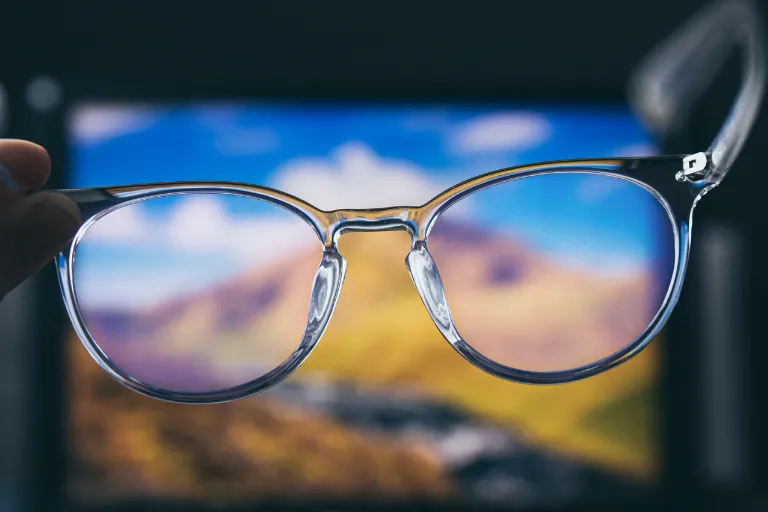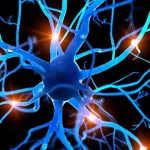Keypoints:
- Blue-light glasses are popular but not a proven solution for reducing daytime digital eye strain.
- Digital eye strain is mainly caused by prolonged focus, reduced blinking, poor posture, and lighting—not blue light alone.
- Scientific studies show mixed results:
- Most research finds no significant benefit for eye fatigue.
- Some evidence supports improved sleep quality when worn before bedtime.
- Experts like the AAO recommend behavioral changes (20-20-20 rule, blinking more, screen adjustments) over blue-light glasses for strain relief.
- User reviews are mixed—some report comfort improvements, others see no difference.
- Evening use may help regulate circadian rhythm by reducing blue-light exposure that delays melatonin release.
- No universal standards exist for “blue-light blocking” claims; lens quality varies widely.
- Most effective strategy: combine healthy screen habits with targeted blue-light blocking for nighttime use.
In a world where screen time is no longer optional, can tinted lenses be the solution to tired eyes?
The Problem in Plain Sight
It’s 3:47 p.m. Your fourth video call of the day just ended. You rub your eyes. They’re dry, itchy, and somehow both strained and blurry. Maybe it’s the overhead lights. Maybe it’s the third cup of coffee. Or maybe, like millions of digital professionals, you’re experiencing a common yet under-acknowledged symptom of modern life: eye fatigue caused by prolonged screen exposure.
Enter blue-light glasses—those trendy, amber-tinted lenses you’ve likely seen in ads promising sharper focus, better sleep, and less eye strain. But are they science-backed tools or just stylish placebos? We set out to investigate what really happens when you put them on.
The Stakes: A Modern Epidemic of Digital Eye Strain
According to The Vision Council, over 60% of American adults report symptoms of digital eye strain (also known as computer vision syndrome), a cluster of discomforts—dryness, blurred vision, headaches, and neck tension—brought on by hours of screen use1. With average screen time hovering above 7 hours per day2, the stakes are high, especially for students, gamers, remote workers, and children.
Blue light, emitted from digital displays, has been blamed as a primary culprit. But is that really the issue?
Subscribe for Free for more insightful health articles tailored to your needs.
What Is Blue Light—and Why the Fuss?
Blue light is part of the visible light spectrum (400–495 nanometers), found in sunlight, LED lighting, and—most notably—screens. It has short wavelengths and high energy, which is why it scatters more easily and may contribute to visual “noise” that tires the eye over time.
However, according to the American Academy of Ophthalmology (AAO), there’s no scientific evidence that blue light from screens causes damage to the eyes or is a significant contributor to eye fatigue3. Instead, the symptoms arise from how we use screens: long periods of focus, reduced blinking, short viewing distances, and poor lighting conditions.
What the Science Actually Says
Peer-reviewed research presents a nuanced picture:
- A 2021 randomized controlled trial published in the American Journal of Ophthalmology found that blue-light filtering lenses had no statistically significant effect on eye strain symptoms compared to clear lenses over a two-week period4.
- A 2020 study in Optometry and Vision Science involving 120 participants similarly found no improvements in visual performance or sleep quality among blue-light glasses users5.
- However, a study in Chronobiology International observed that wearing blue-light blocking glasses in the evening did improve melatonin levels and reduced time to fall asleep, particularly among individuals with circadian rhythm disturbances6.
In short, while blue-light glasses may not reduce eye strain during daytime screen use, they may have a role in sleep regulation, especially when worn in the hours before bed.
Expert Opinions: A Healthy Dose of Skepticism
Dr. Rahul Khurana, a clinical spokesperson for the AAO, summarized the consensus:
“There’s no scientific evidence that blue-light blocking glasses help with eye strain. The symptoms people experience are due to how they use screens, not the blue light itself”3.
The NHS and the Vision Council echo this stance, recommending behavioral adjustments over specialized eyewear for most users1.
Still, some experts acknowledge a placebo effect—and in some cases, that’s not a bad thing. “If someone finds subjective relief, I won’t dismiss that,” says Dr. Stephanie Erwin, a San Francisco-based optometrist. “Comfort and psychological reassurance can be therapeutic in their own right.”
Alternatives That Actually Work
Before investing in blue-light glasses, consider trying these research-backed strategies:
- 20-20-20 Rule: Every 20 minutes, look at something 20 feet away for 20 seconds7.
- Blink Frequently: Blinking less while staring at screens leads to dryness. Consciously blinking more can help.
- Adjust Screen Positioning: Keep your monitor slightly below eye level and about 20–28 inches away.
- Optimize Lighting: Reduce glare and use warm, indirect light sources to minimize eye strain.
- Use Screen Tinting Apps: Programs like f.lux or Night Shift automatically reduce blue light exposure in the evening.
- Ergonomics Matter: Poor posture and screen height can exacerbate tension that mimics or compounds eye discomfort.
What Users Are Actually Saying
On platforms like Reddit, Amazon, and Trustpilot, feedback about blue-light glasses varies:
- Positive anecdotes: Some users report feeling “less drained” or “sharper” after using the glasses during long editing or gaming sessions.
- Mixed reviews: Others say they help at night, but don’t notice much change during the day.
- Criticism: Many believe the effects are negligible or purely cosmetic.
Recurring themes include comfort, aesthetic design, and the uncertainty of whether benefits are psychological or physiological.
What About Sleep?
This is one area where blue-light glasses show more promise.
Exposure to blue light in the evening delays the body’s melatonin release, disrupting the circadian rhythm. Studies show that wearing blue-light blocking lenses 2–3 hours before bedtime can help improve sleep quality, especially among adolescents and shift workers68.
So while the benefits for eye fatigue may be limited, there is scientific support for their role in supporting healthier sleep patterns.
Subscribe for Free for more insightful health articles tailored to your needs.
Are There Standards for Blue-Light Glasses?
Unfortunately, the answer is no—at least not universally. The term “blue-light blocking” is not regulated, meaning product quality and efficacy vary widely.
Look for:
- Transparency about the wavelength cutoff (ideally blocking light in the 400–480 nm range)
- Third-party testing or certifications
- Customer-friendly return policies, since effectiveness is highly individual
Without clear labeling or industry standards like ISO or ANSI certification, it’s hard to verify if a lens delivers on its promises.
Final Verdict: Should You Buy?
If you’re buying blue-light glasses specifically to reduce eye strain, the evidence says: you may want to look elsewhere. Behavioral strategies—like taking screen breaks, improving lighting, and adjusting ergonomics—are likely more effective.
However, if your concern is evening screen use and sleep disruption, blue-light glasses can be beneficial when worn consistently before bed.
Ultimately, they’re not magic shields—but under the right circumstances, they may be a helpful tool in your digital wellness toolkit.
Learn More
- American Academy of Ophthalmology – Eye Strain Tips
- Vision Council – Digital Eye Strain Reports
- Chronobiology International Study on Melatonin & Blue Light
The article does not in any way constitute as medical advice. Please seek consultation with a licensed medical professional before starting any treatment. This website may receive commissions from the links or products mentioned in this article.
Subscribe for Free for more insightful health articles tailored to your needs.
Sources
- The Vision Council. (2023). Screen Time & Your Eyes. https://thevisioncouncil.org/research-reports
- DataReportal. (2024). Digital 2024: Global Overview Report.
- American Academy of Ophthalmology. (2021). Blue Light and Digital Eye Strain. https://www.aao.org/newsroom/news-releases/detail/blue-light-and-digital-eye-strain
- Rosenfield, M., et al. (2021). Effect of Blue-Blocking Spectacle Lenses on Digital Eye Strain in a Simulated Office Environment: A Randomized Controlled Trial. American Journal of Ophthalmology. https://doi.org/10.1016/j.ajo.2021.02.022
- Lawrenson, J.G., et al. (2020). The Efficacy of Blue-Light Filtering Lenses on Visual Performance and Sleep Quality: A Randomized Controlled Trial. Optometry and Vision Science, 97(9). https://doi.org/10.1097/OPX.0000000000001560
- Burkhart, K., Phelps, J. (2009). Amber Lenses to Block Blue Light and Improve Sleep: A Randomized Trial. Chronobiology International, 26(8). https://doi.org/10.3109/07420520903523719
- American Optometric Association. (2023). Computer Vision Syndrome. https://www.aoa.org
- Heath, M., et al. (2014). Effects of Evening Exposure to Blue-Enriched Light on Sleep and Melatonin in Adolescents. Journal of Adolescent Health, 55(4). https://doi.org/10.1016/j.jadohealth.2014.06.007





So it’s not the blue light, it’s how we use screens. That explains a lot